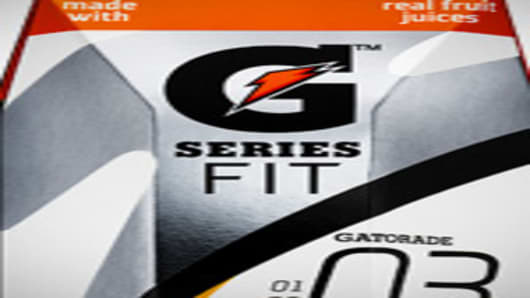I've seen people stand in front of the Gatorades at my local supermarket having no clue what all the names and numbers were. And this is a society that has learned the complex system of ordering at Starbucks .
So what's the plan? To greater speak to their target market, in-depth sponsorship activation is key. At last month's Boston Marathon, for example, runners got a Prime product before, Perform during the race and were handed a Recover upon crossing the finish line.
Next, it's about controlling the retail experience, which Andrea Fairchild, Gatorade's vice president of brand marketing, tells me she is "maniacally" focused on. What's the best way to do that? Segment the shelves into before, during and after occassions. So all the 01, 02 and 03 products are grouped together.
Finally, there's segmentation by marketplace, which should alleviate some of the confusion. The G Series will be in supermarkets, the G Series Fit will be found in Walgreen's , Target and gyms and G Series Pro will remain in sports specialty stores like Dick's and GNC.
As Gatorade's unofficial historian — I wrote the book "First In Thirst: How Gatorade Turned The Science Of Sweat Into A Cultural Phenomenon" in 2005 — I have not been happy with the brand's direction in the last couple years.
Perhaps it was the traditionalist in me that first set me off when Gatorade became "G." It continued with ads that got away from the science and allowed Powerade to exploit that area. And it didn't help when I could just tell that the new G Series products weren't being understood by the consumer.
But I'm starting to turn around. Generalists don't win in this world anymore. As Under Armour has proven, exploiting niches and convincing the customer they need them, is the fastest way to grow. Gatorade had become the official drink of construction workers more than it was for athletes. It became a punchline among those who worked out hardcore. It had lost all its aspiration qualities and was no longer the magic elixir to today's 10 year-olds as it was to me in the 80s.
If Gatorade can get this fragmented strategy communicated right, I think there's big potential to evolve and by that I mean grow. If consumers get into the habit of using a Gatorade product, that's massive revenue. Instead of grossing $1 from a single drink, someone who buys all three of the Fit line will pay $6.47 for the three phases and that could be turned over for every single workout.
I'm not ready to say that Gatorade is going to be a sure success, but I do think the brand is back on track.
Questions? Comments? SportsBiz@cnbc.com



